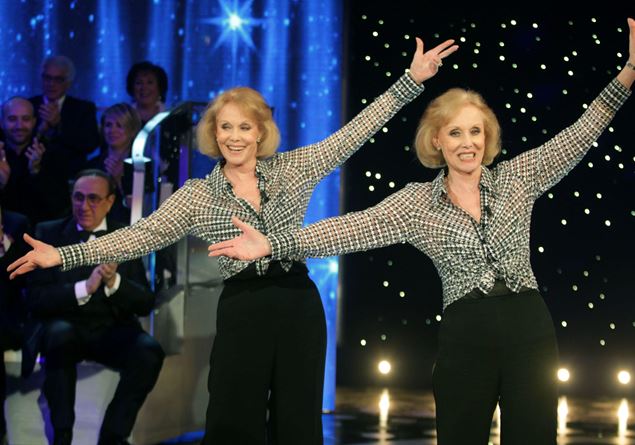«Together until the end», were the headlines of many newspapers and information sites when reporting on the death of the Kessler twins, Alice and Ellen.
A formula that seems packaged to give a sinisterly glamorous tone, like a modern fairy tale. And instead behind the brilliant veneer of a media story almost seduced, or hypnotized, by this gesture, there is a choice – assisted suicide – which deserves far more questions and which leaves us doubly dismaying, also because the Kessler twins were not only beloved by at least two generations of Italians but were also the most accomplished icon of the golden age of our television and their performances (starting with the famous Da-da-un-pa to Studio One) are linked to big names and Rai programs of the 1960s, from Antonello Falqui – who brought them to Italy thanks to that talent scout Guido Sacerdote who noticed them at the Lido in Paris – to Don Lurio, from Mina to Alberto Sordi, from Pippo Baudo to Raffaella Carrà.
The script of the death, reconstructed by the media on the basis of the (little) news that has emerged so far, is this: the decision taken together, the desire to be followed by the “Deutsche Gesellschaft fuer humanes Sterben” (Dghs), the largest and oldest German association dealing with assisted suicide, which had the task of verify, through a doctor and a lawyer, that their choice was “free and responsible”, the desire to be cremated in the same urn, next to their mother and their dog.
We don’t know if one of the two was ill, and with what, and if the situation had possibly worsened in the last few weeks or days.
The ruling with which the Constitutional Court of Karslruhe decriminalized assisted suicide five years ago was limited to requiring only verification of full awareness of the suicidal choice, not involving public health in a decision considered entirely private, as happened to the Kessler twins. There The Italian Constitutional Court was instead much more cautious and guaranteeing, appealing to Parliament to legislate after having provided for very limited exceptions to the principle of the punishability of those who help a person who asks them to commit suicide.
The last public appearance of the Kessler twins, as reported by the German media, it dates back to October 24th on the occasion of the premiere of the “ARTistART” show of the German professional circus Roncalli in Munich.
The rhetoric of “freedom”, evoked by various commentators, has once again emerged as the absolute category with which to describe (and sometimes justify) everything. Freedom to choose when to die, how to die, who to die with. Yet, if freedom is the pivot, its counterweight – the limit – seems to have disappeared from public discourse.
The result is a smooth, almost romantic narrative, which presents as a gesture of harmony what is, in its most naked reality, an extreme act carried out by two 89-year-old women who, perhaps, feared – and it is a very human fear, which unites us all – the shadow of old age and fragility, the looming night, the possibility of surviving each other after a life and career lived in total symbiosis.
Among the many memories and declarations of condolence, that of Iva Zanicchi: «Each case», he said, «must be read in itself and we don’t know things well but the news of their choice shocks me. Life is so sacred and so precious to me that we must have, let’s face it, the courage to live it until the last moment, because it is a precious gift.”
The exaltation of freedom as the only possible interpretation of the death of the Kessler twins risks making us miss the opportunity for a broader reflection on the ethical, cultural and social meaning and significance of the end of life. On loneliness disguised as autonomy. On the terror of addiction transformed into law. On believing, as was done in this case, that voluntary death with a lethal drug is the coherent and consequential sign of a “modernity” that the Kessler twins inaugurated many years ago for their casual, but never vulgar, use of their legs in the television variety show.
When the footlights go out and the penultimate curtain falls, the characters become people. And they share with all of us the fragility, the fear, the pain that life, as it passes, can become hopeless. Or, worse, useless.
Perhaps another possible key to telling this story is that of loneliness. The one that often overwhelms the most fragile lives, marked by suffering, discomfort and advancing age. Lives that, perhaps, we are no longer able to take care of or even talk about. Even when faced with painful cases like this.


